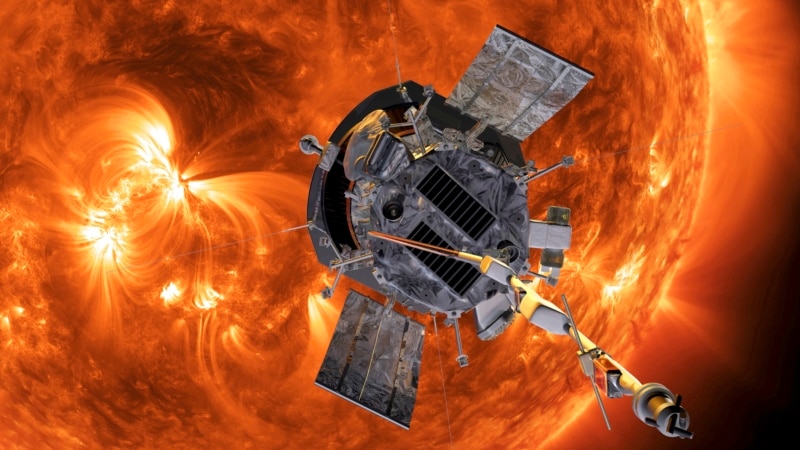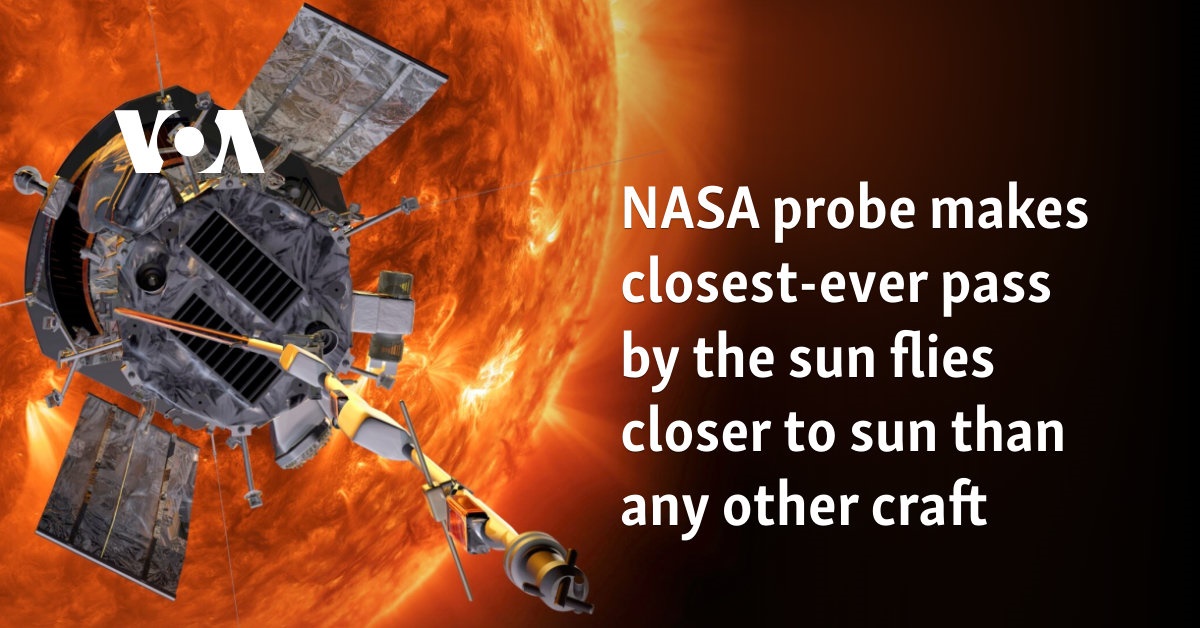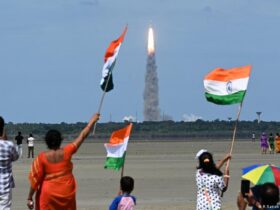
NASA’s pioneering Parker Solar Probe made history Tuesday as it flew closer to the sun than any other spacecraft, with its heat shield exposed to scorching temperatures of up to 930 degrees Celsius (1,700 degrees Fahrenheit).
Launched in August 2018, the spacecraft is on a seven-year mission to deepen scientific understanding of our star and help predict space-weather events that could affect life on Earth.
Tuesday’s historic flight was scheduled to occur at exactly 11:53 a.m. Greenwich Mean Time, although mission scientists will have to wait until Friday for confirmation as they will lose contact with the spacecraft for several days due to its close proximity to the sun.
“Right now, Parker Solar Probe is flying closer to a star at 6.1 million kilometers (3.8 million miles) than it has ever been before,” NASA official Nicky Fox said in a video posted on social media Tuesday morning.
“It’s a total ‘yay, we did it’ moment.”
If the distance between Earth and the Sun is equal to the length of an American football field, 109.7 meters, the spacecraft should be about four meters from the end zone at the time of closest approach – known as perihelion.
“This is an example of NASA’s bold missions, doing something that has the potential to answer long-standing questions about our universe,” Parker Solar Probe program scientist Eric Posner said in a statement Monday. “No one has ever done it before.”
“We can’t wait to get the first status updates from the spacecraft and begin receiving science data in the coming weeks.”
The heat shield is so effective that the probe’s internal instruments remain at room temperature – about 29 C (85 F) – as it explores the sun’s outer atmosphere, called the corona.
Parker will also move at a top speed of about 690,000 kilometers per hour (430,000 mph), which is fast enough to fly from the US capital Washington to Tokyo, Japan in under a minute.
“Parker will return data from a truly uncharted region,” said Nick Pinkin, mission operations manager at the Johns Hopkins Applied Physics Laboratory in Laurel, Maryland.
“We’re excited to hear the spacecraft’s reaction as it moves around the Sun.”
By entering these extreme conditions, Parker is helping scientists tackle some of the Sun’s biggest mysteries: how the solar wind is generated, why the corona is hotter than the surface below, and how coronal mass ejections – plasmas – occur. Created huge clouds that roam in space.
The Christmas Eve flyby is the first of three record-setting close passes, with the next two – on March 22 and June 19, 2025 – both expected to return the probe to a similar distance from the Sun.






Leave a Reply